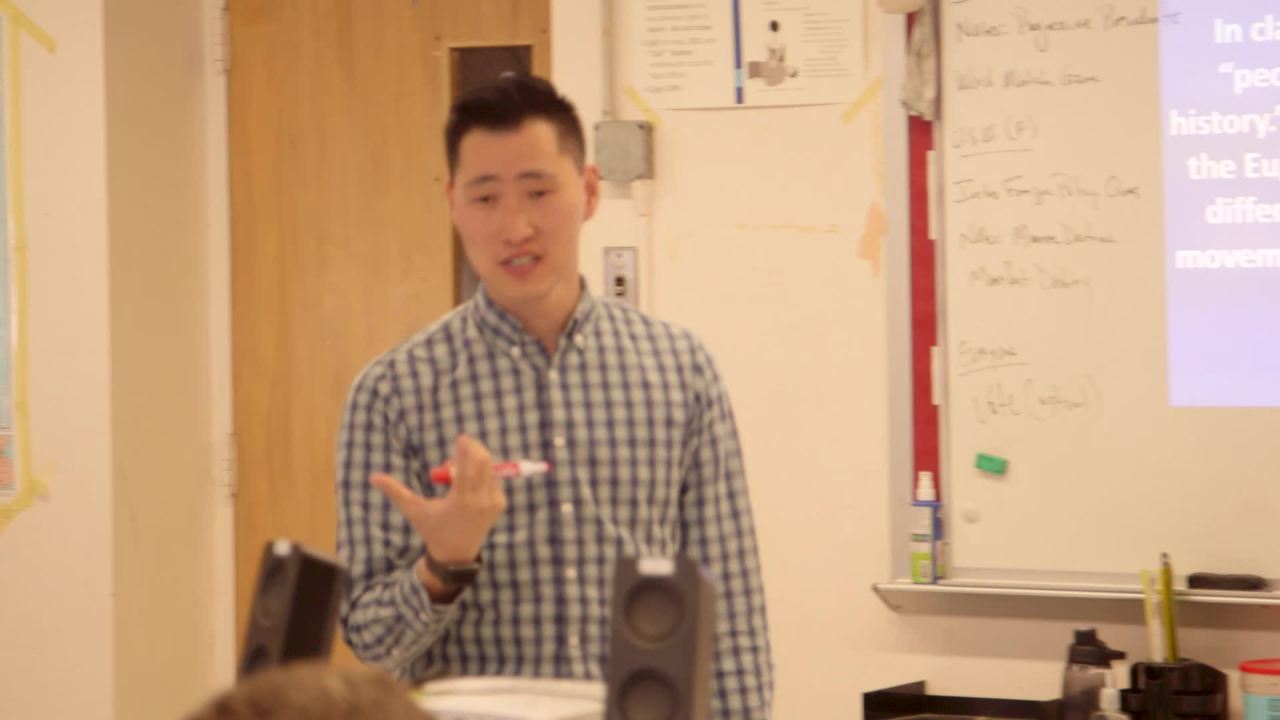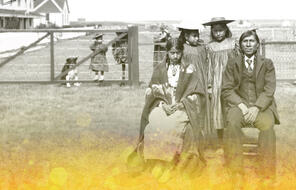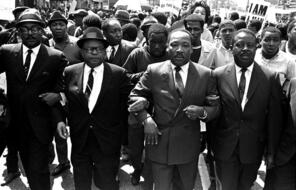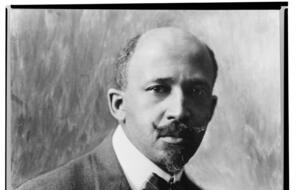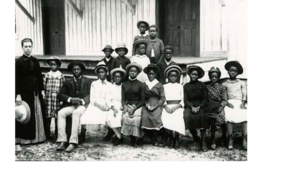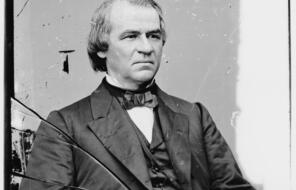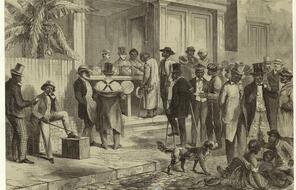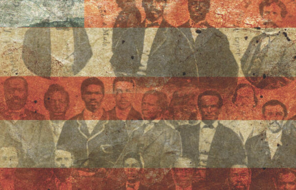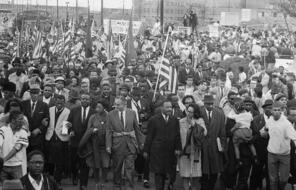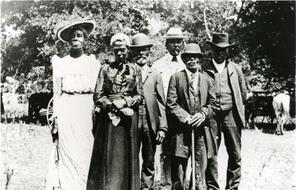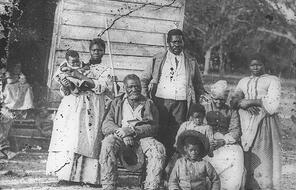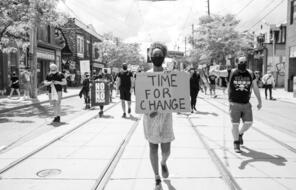[DENNY CONKLIN] Today's lesson, we are looking at the legacy of the eugenics movement. And the big goal for this lesson is to synthesize a lot of what students have already been learning about. We've covered the basic history of racial science. A lot of today is about the reflection on that legacy. We also haven't talked, necessarily, about the upstanders, or the people who might have spoken out against the eugenics movement. So for homework, students had a reading by George Wallace called Confronting A Twisted Science, which was really their first look into somebody who's publicly speaking out against the ideas of the eugenics movement. I don't want students to get the wrong impression, that is, every American is buying into these ideas. I think that also provides a lens of what it means to be an upstander how that can be a frame for choosing to participate. The two questions on the board, the first is asking us to think about our most recent topic, which was the Supreme Court case of Buck versus bell. So somebody remind me, what was the Supreme Court case of Buck Versus Bell? [STUDENT 1] It's a famous Supreme Court case where the Supreme Court ruled that sterilization was constitutional, and that states could have laws forcing sterilization. [DENNY CONKLIN] Forced sterilization, forced sterilization of who? Everyone? Some people? Feebleminded people? Unwanted people? So this is an important part. So how did the Supreme Court justify that, being legal? [STUDENT 2] They said that the total cost of supporting a feeble-minded person or a criminal was large, and that it was a burden on every member of society to support them. And also, they believed sort of that this was a hereditary thing, so that every single member of their family from there on out would be problematic. And so, just like the economics of it. So these economic arguments about how much it was going to cost society and taxpayers to fund and support people who were deemed feeble-minded. We're thinking about the eugenics movement now. What choices did people make during the eugenics movement? So I hope that you thought about a broad range of people. It could be a regular, ordinary American, scientists, political figure. There's a lot of different people that could have made a lot of various choices. And what do you think the impact of these choices was? Nick? [NICK] With the average Americans, I guess, quote, unquote, "average Americans," I feel like it was less like, the choices that they made and like, the actions that they took, and more like what they didn't do, because a lot of people just ignored what was happening and just took it for whatever they were told. And they really just-- even though they might have thought at the time that they weren't really doing much, it's a lot like the bystander effect, where since nobody was doing anything, nobody thought it was wrong. And so they just continued this way and actually, in a way, helped with the eugenics movement. [DENNY CONKLIN] I like what you said, Nick, because you talk about this idea that their inaction was actually action. I like that you used the term bystander effect to, because it gets to kind of the range of human behaviors, and the things that people-- the roles that sometimes people can take. To the whole list of people-- I mean, we could go on for this for a really long time. When you take a look at this list, and you step back and think about all these people and the choices that we make, what overall conclusions can you make, then, about who is responsible for eugenics, or just what was happening during the time period? [STUDENT 3] I feel like a lot of people are responsible. Like there are people like the scientists and politicians, who sort of, I guess, gave a spark to the movement, who like started it. But like that average American, like the neglect they gave towards the movement, that also made it catch on. So it's not one person. [DENNY CONKLIN] We can't pin this on one person. Antonia, add on to that? [ANTONIA] I just like, don't feel like it was the average American's fault, because if scientists are giving you all these like, statistics and facts and stuff and they're scientists, why would you not believe them? Like, you don't have any reason to doubt them. [DENNY CONKLIN] And that gets back to some ideas of power dynamics. Tim? [TIM] The average American like, kind of is pretty responsible, just because they-- I don't know. This is like, a pretty racist time period. And like, these ideals that the scientists were giving them supported what they wanted to believe. [DENNY CONKLIN] In your homework reading last night, Confronting A Twisted Science, you got to see the Vice President of the United States speaking out against the eugenics movement. Going along with his idea of the average American, somebody tell me your thoughts on, what would it take for somebody to speak up against the eugenics movement? What would be at stake? What would you need to do if you were going to speak out against the eugenics movement? [NICK] By doing that, they're going to have to really sacrifice their own social comfortability. Because once they do that, there's sure to be people from their like, neighbors to their friends who, if they find out that they're against the eugenics movement, they might actually lose interest in that friend, or even gain negative thoughts about them. [DENNY CONKLIN] Antonia, did you want to add on to what Nick said? [ANTONIA] I was just going to say like, you would also need a lot of facts and like, something to back it up. Because like, if you just said like, I don't support it, they'd be like, why? Because with all the evidence they had for it, even though it was tainted, they still had something. [DENNY CONKLIN] I thought the lesson went really well. I was very happy, especially with the discussion that we had around the different individuals that had a role in the eugenics movement and an analysis of the choices that they made. I really wanted to let the students drive that part of the discussion. I thought it was also really nice that we had an opportunity to talk about the range of human behavior, so that the ideas of bystanders came up, and upstanders came up, and that didn't necessarily have to come from me, but it was part of some of the vocabulary, some of the language that they had used already. One of the great things about the judgment memory legacy piece of the Facing History journey is that we don't just end with the history, but we try to look and bring it up to the present. And we've talked a little bit about how it connects to modern issues of genetic engineering, so they've gotten that current events connection. So it's like a teacher's dream for students to want to be more inquisitive, want to learn more, present some great opportunities in the classroom.
